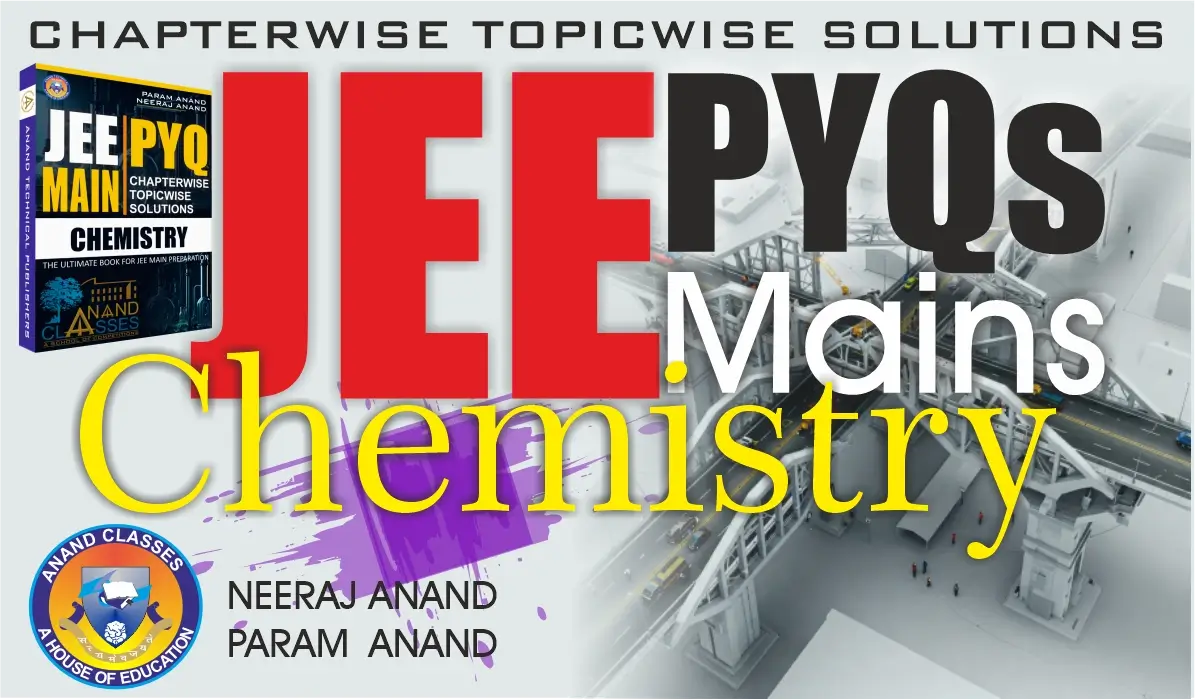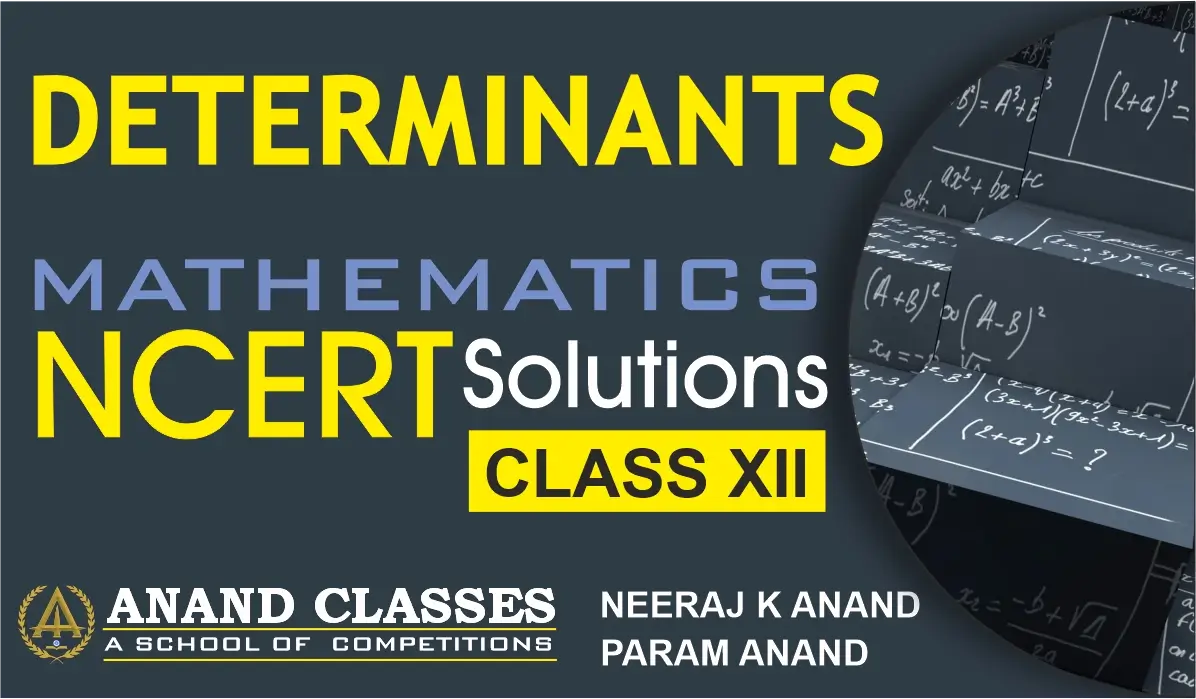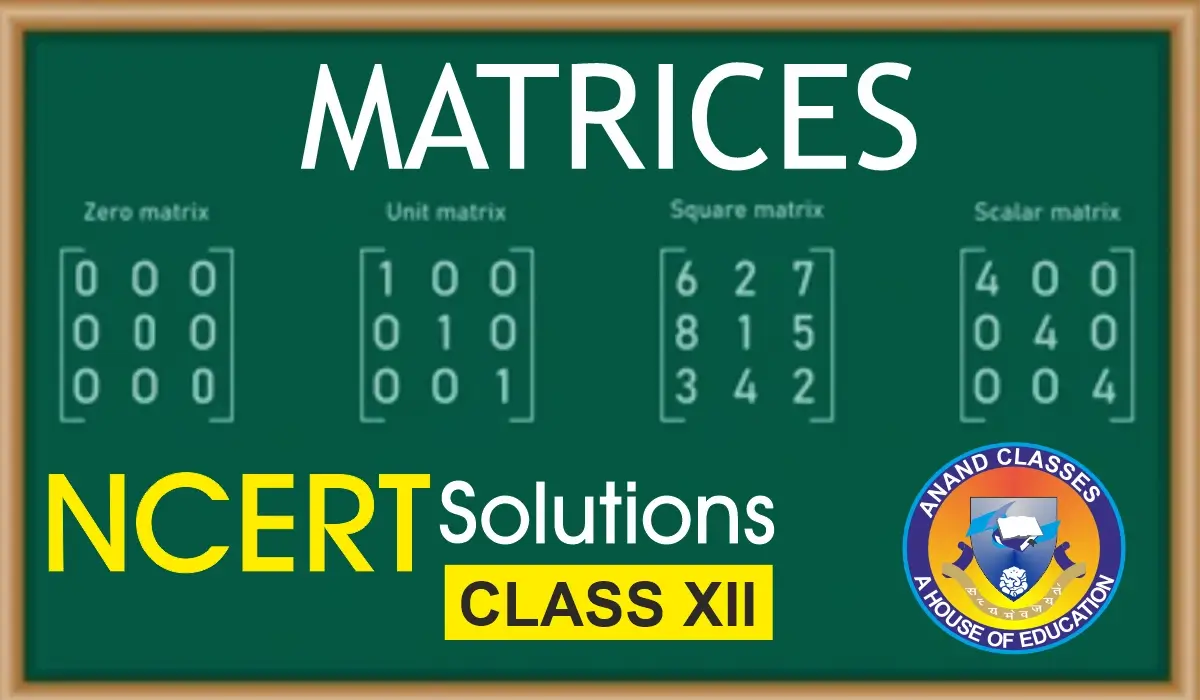Anand Classes provides JEE Main important previous years’ questions (PYQs) along with chapterwise MCQs and solutions from the Periodic Table chapter. This resource is designed to help students practice effectively, understand concepts clearly, and perform confidently in the exam. Each question is accompanied by step-by-step solutions to aid learning and revision. Click the print button to download study material and notes.
JEE Main 2024 – Electronic Configuration of Elements
JEE Main 2024 Question :
Match List I with List II.
| List I (Element) | List II (Electronic Configuration) |
|---|---|
| (A) N | I. [Ar]3d¹⁰4s²4p⁵ |
| (B) S | II. [Ne]3s²3p⁴ |
| (C) Br | III. [He]2s²2p³ |
| (D) Kr | IV. [Ar]3d¹⁰4s²4p⁶ |
Options:
(A) A-IV, B-III, C-II, D-I
(B) A-I, B-IV, C-III, D-II
(C) A-III, B-II, C-I, D-IV
(D) A-II, B-I, C-IV, D-III
Answer: (C) A-III, B-II, C-I, D-IV
Step 1: Nitrogen (N)
- Atomic number = 7.
- Electronic configuration = 1s² 2s² 2p³.
- In shorthand: [He]2s²2p³.
- This matches with III in List II.
Step 2: Sulfur (S)
- Atomic number = 16.
- Electronic configuration = 1s² 2s² 2p⁶ 3s² 3p⁴.
- In shorthand: [Ne]3s²3p⁴.
- This matches with II in List II.
Step 3: Bromine (Br)
- Atomic number = 35.
- Electronic configuration = 1s² 2s² 2p⁶ 3s² 3p⁶ 4s² 3d¹⁰ 4p⁵.
- In shorthand: [Ar]3d¹⁰4s²4p⁵.
- This matches with I in List II.
Step 4: Krypton (Kr)
- Atomic number = 36.
- Electronic configuration = 1s² 2s² 2p⁶ 3s² 3p⁶ 4s² 3d¹⁰ 4p⁶.
- In shorthand: [Ar]3d¹⁰4s²4p⁶.
- This matches with IV in List II.
Step 5: Correct Matching
- A (N) → III. [He]2s²2p³
- B (S) → II. [Ne]3s²3p⁴
- C (Br) → I. [Ar]3d¹⁰4s²4p⁵
- D (Kr) → IV. [Ar]3d¹⁰4s²4p⁶
So the correct option is:
$$\boxed{\text{(C) A-III, B-II, C-I, D-IV}}$$
Concept Takeaway
- Group 15 (N family): general configuration ns²np³ (N ends with 2p³).
- Group 16 (O family): general configuration ns²np⁴ (S ends with 3p⁴).
- Group 17 (Halogens): general configuration ns²np⁵ (Br ends with 4p⁵).
- Group 18 (Noble gases): general configuration ns²np⁶ (Kr ends with 4p⁶).
- Exam Tip: Quickly recall that:
- Halogens → p⁵
- Noble gases → p⁶
- Oxygen family → p⁴
- Nitrogen family → p³
- In competitive exams like JEE / NEET, you don’t need to expand the entire configuration — just focus on the last subshell filling trend (p³, p⁴, p⁵, p⁶). This saves a lot of time.
For better preparation you should make use of revision resources such as download notes, study material, preparation notes, class 11 chemistry references, JEE PYQs chapterwise practice, and detailed Anand Classes explanations on periodic table and periodicity.
JEE Main 2024 – Periodic Properties of Boron Family
JEE Main 2024 Question :
Match List I with List II
| List I (Properties) | List II (Trends/Orders) |
|---|---|
| A. Melting Point [K] | IV. B > Al > Tl > In > Ga |
| B. Ionic Radius [M³⁺/pm] | I. Tl > In > Ga > Al > B |
| C. ΔH₁ [kJ mol⁻¹] | II. B > Tl > Al ≈ Ga > In |
| D. Atomic Radius [pm] | III. Tl > In > Al > Ga > B |
Options:
A A-IV, B-I, C-II, D-III
B A-I, B-II, C-III, D-IV
C A-III, B-IV, C-I, D-II
D A-II, B-III, C-IV, D-I
Answer: (A) A-IV, B-I, C-II, D-III
Explanation:
- For the melting point trend of Group 13 elements (B, Al, Ga, In, Tl), boron has the highest due to strong covalent bonding, and gallium has the lowest due to weak metallic bonding. Thus the order is B > Al > Tl > In > Ga, which matches IV.
- For ionic radius of M³⁺ ions, the radius increases down the group. The order is Tl³⁺ > In³⁺ > Ga³⁺ > Al³⁺ > B³⁺, which matches I.
- For ionization enthalpy (ΔH₁), it decreases down the group with some irregularities caused by d and f orbital shielding. The order is B > Tl > Al ≈ Ga > In, which matches II.
- For atomic radius, it increases down the group, but Ga is smaller than expected due to poor shielding of d-electrons. The order is Tl > In > Al > Ga > B, which matches III.
Thus, the correct matching is A-IV, B-I, C-II, D-III, corresponding to option (A).
Exam Tip: Gallium is exceptional with its very low melting point and unusually small atomic radius. Such exceptions are frequently tested in JEE PYQs and NEET exams. For effective revision, use preparation notes, study material, download notes, and chapterwise JEE PYQs from Anand Classes on class 11 chemistry, focusing on periodic table and periodicity.
JEE Main 2024 – Correct and Incorrect Statement
JEE Main 2024 Question :
Given below are two statements:
Statement (I): The oxidation state of an element in a particular compound is the charge acquired by its atom on the basis of electron gain enthalpy consideration from other atoms in the molecule.
Statement (II): pπ – pπ bond formation is more prevalent in second period elements over other periods.
Options:
A. Statement I is correct but Statement II is incorrect
B. Both Statement I and Statement II are correct
C. Statement I is incorrect but Statement II is correct
D. Both Statement I and Statement II are incorrect
Answer: (C) Statement I is incorrect but Statement II is correct
Detailed Explanation:
Step 1: Understanding Statement (I)
The oxidation state of an element is a formal or hypothetical charge that an atom would carry if all bonds in a molecule were completely ionic.
- It is not calculated directly from electron gain enthalpy.
- Oxidation numbers are assigned by following rules such as:
- Oxygen is usually −2 (except in peroxides where it is −1).
- Hydrogen is usually +1 (except in metal hydrides where it is −1).
- The sum of all oxidation states in a neutral compound must be zero.
- For example, in $H_2SO_4$, let oxidation state of S = x:
$$2(+1) + x + 4(-2) = 0 \implies x = +6$$
This clearly shows that the concept depends on formal rules, not on electron gain enthalpy values.
Therefore, Statement (I) is incorrect.
Step 2: Understanding Statement (II)
The second period elements (like C, N, O, F) have small atomic radii and their 2p orbitals are compact.
- This allows effective sidewise overlap of p-orbitals, leading to strong pπ – pπ multiple bonds.
- Examples:
- $O_2$ has a strong double bond with pπ – pπ overlap.
- $N_2$ has a triple bond with very strong pπ – pπ overlap.
- $CO$ and $CO_2$ both show strong pπ – pπ bonding.
- In contrast, for third-period elements like Si, P, S, their 3p orbitals are larger and more diffuse. This leads to poor sidewise overlap, making multiple bonding through pπ – pπ overlap weak or negligible. Instead, these elements prefer single bonds or bonding via d-orbitals.
Therefore, Statement (II) is correct.
Step 3: Final Answer
Comparing both statements, the correct choice is:
(C) Statement I is incorrect but Statement II is correct.
Exam Tip:
- Always remember: oxidation state = formal charge based on rules, not experimental values like electron gain enthalpy.
- pπ – pπ bonds are strongest for second period elements due to effective orbital overlap.
- For JEE and NEET, revise with study material, class 11 chemistry preparation notes, download notes, and JEE PYQs chapterwise by Anand Classes, especially the periodic table and periodicity chapter.
JEE Main 2024 – Correct and Incorrect Statement
JEE Main 2024 Question :
Match List I with List II
| List I (Elements) | List II (Properties in their respective groups) |
|---|---|
| (A) Cl, S | (i) Elements with highest negative electron gain enthalpy |
| (B) Ge, As | (II) Elements which show properties of both metals and non-metals |
| (C) Fr, Ra | (III) Elements with largest atomic size |
| (D) F, O | (IV) Elements with highest electronegativity |
Correct Answer: A-IV, B-III, C-II, D-I (Option D)
Explanation:
- Cl, S: Both chlorine and sulfur have very high negative electron gain enthalpy values. Chlorine, in fact, has the most negative electron gain enthalpy in the periodic table. Hence, A → IV.
- Ge, As: Germanium and arsenic are metalloids, meaning they exhibit properties of both metals and non-metals. Hence, B → III.
- Fr, Ra: Francium (alkali metal) and radium (alkaline earth metal) lie at the bottom of their groups, giving them the largest atomic sizes in their respective groups. Hence, C → II.
- F, O: Fluorine and oxygen are the most electronegative elements, with fluorine being the highest in the periodic table. Hence, D → I.
Thus, the correct matching is A-IV, B-III, C-II, D-I.
This type of match-the-following is very important for class 11 chemistry periodic table and periodicity revision. Practicing such problems from JEE PYQs chapterwise, preparation notes, and study material from Anand Classes helps in quick and effective preparation.
JEE Main 2024 – Electron Affinity Concept
JEE Main 2024 Question :
The electron affinity value are negative for
(A) Be → Be⁻
(B) N → N⁻
(C) O → O²⁻
(D) Na → Na⁻
(E) Al → Al⁻
Options:
(A) A, B, D and E only
(B) D and E only
(C) A and D only
(D) A, B and C only
Answer : Correct Option: (B) D and E only
Step 1: Recall the definition
Electron affinity (EA) is the energy change when an isolated gaseous atom accepts an extra electron.
If energy is released, EA is negative (favorable process).
If energy is absorbed, EA is positive (unfavorable process).
Step 2: Analyze each case
(A) Be → Be⁻
Beryllium has a stable 1s²2s² configuration. Adding an electron forces it into a higher 2p orbital. This process requires energy → EA is positive.
(B) N → N⁻
Nitrogen has a half-filled 2p³ configuration, which is extra stable. Adding an electron causes repulsion and disrupts stability. This requires energy → EA is positive.
(C) O → O²⁻
The first EA for oxygen (O → O⁻) is negative. But the second EA (O⁻ → O²⁻) is highly unfavorable due to repulsion between negative charges. Overall → EA is positive.
(D) Na → Na⁻
Sodium usually loses an electron to form Na⁺. But if it gains one, the electron enters a new 3p orbital. This process is exothermic → EA is negative.
(E) Al → Al⁻
Aluminum has configuration [Ne]3s²3p¹. Gaining an electron gives a more stable p² arrangement. This releases energy → EA is negative.
Step 3: Final Answer
The electron affinity value is negative for (D) Na → Na⁻ and (E) Al → Al⁻.
Correct Option: (B) D and E only
Exam Tip:
Half-filled and fully filled subshells like Be and N resist electron gain so EA is positive.
Highly electronegative nonmetals like halogens have strongly negative EA.
Second EA values are always positive due to strong repulsion.
This is important for revision of periodic table and periodicity in class 11 chemistry. For better preparation, practice JEE PYQs chapterwise with Anand Classes study material, preparation notes, and downloadable notes.
JEE Main 2024 – Electron Affinity Concept
JEE Main 2024 Question :
Given below are two statements:
Statement I: In group 13, the stability of +1 oxidation state increases down the group.
Statement II: The atomic size of gallium is greater than that of aluminium.
In the light of the above statements, choose the most appropriate answer from the options given below:
(A) Statement I is incorrect but Statement II is correct
(B) Statement I is correct but Statement II is incorrect
(C) Both Statement I and Statement II are correct
(D) Both Statement I and Statement II are incorrect
Answer: (B) Statement I is correct but Statement II is incorrect
Explanation:
- Statement I is correct because in Group 13 (boron family), the inert pair effect becomes stronger as we move down the group. This makes the +1 oxidation state increasingly stable for heavier elements like indium and thallium, while lighter elements like boron and aluminium show +3 more prominently.
- Statement II is incorrect because although atomic size normally increases down a group, gallium is an exception. The poor shielding by 3d electrons increases effective nuclear charge, which causes contraction in size. Thus, gallium has an atomic radius nearly equal to or slightly smaller than aluminium.
📚 Buy Study Material & Join Our Coaching
For premium study materials specially designed for JEE, NEET, NDA, and CBSE/ICSE Classes, visit our official study material portal:
👉 https://publishers.anandclasses.co.in/
For NDA Study Material, Click Here
For SSC Study Material, Click Here
To enroll in our offline or online coaching programs, visit our coaching center website:
👉 https://anandclasses.co.in/
📞 Call us directly at: +91-94631-38669
💬 WhatsApp Us Instantly
Need quick assistance or want to inquire about classes and materials?
📲 Click below to chat instantly on WhatsApp:
👉 Chat on WhatsApp
🎥 Watch Video Lectures
Get access to high-quality video lessons, concept explainers, and revision tips by subscribing to our official YouTube channel:
👉 Neeraj Anand Classes – YouTube Channel


